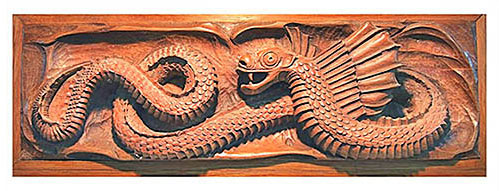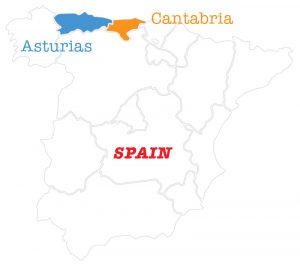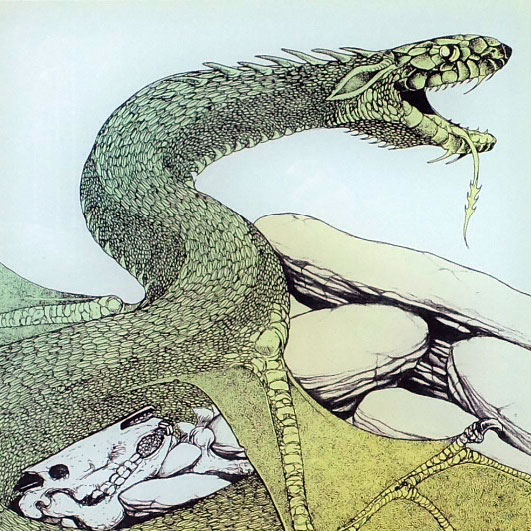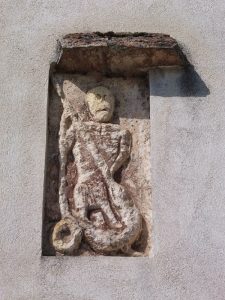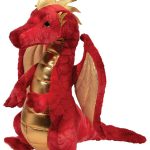Dragon Mythology: The Cuélebre
What is the Cuélebre?
The Cuélebre is a giant winged serpent-dragon of Spanish Asturian and Cantabrian mythology. It lives in a cave, guarding treasure and keeping enchanted creatures known as xanas / anjanas as its prisoners.
What does the Cuélebre look like?
The cuélebre has the body of a serpent covered with scales so thick that it is impervious to swords, arrows or bullets. It is almost invincible except for the one weak point – its throat. It is this area on the body that humans aim for when fighting this mythical being.
Two enormous bat wings emerge from its back (although some claim that they are actually dragon wings) and it is said that in its mouth are teeth as sharp as needles. The cuélebre has a foul and poisonous breath and it can spit fire and sulfur.
They make a whistling noise as they fly which can be heard at great distances, often alerting prey such as cattle and humans to their presence, however for the most part they stay quite still.
PHOTO: El Cuélebre (giant winged serpent-dragon of the Asturian and Cantabrian mythology). Woodcarving by Eliseo Nicolás Alonso (1955-2012).
Author: Fotoasturias. This file is licensed under the Creative Commons Attribution 4.0 International license.
Where does the Cuélebre live?
They mostly live in deep caves but they have also been know to reside in forests or fountains.
There are many places in Asturias and Cantabria that make reference to the cuélebre:
- In Mestas de Con (Cangas de Onís) there are three caves situated close together known as Cuevas del Cuélebre
- Near Cuerres (Cangas del Narcea) there is the Pozo del Cuélebre (Well of the Cuélebre)
- In Sobrefoz (Ponga) there is the Ramada del Cuélebre (Shelter of the Cuélebre). It is said that the Cuélebre here left a trail of flowers in his wake
- In Intriago can be found the Fuente’l Cuélebre (Fountain of the Cuélebre)
There are other many other caves where it is said that they live including in Buelna (Llanes), Saliencia (Somiedo), Noriega (Ribadedeva), Piedrafita between Morcín and Quirós, Brañaseca (Cudillero), etc …
The Asturian tradition is rich in legends in which these beings appear. In Cantabria, the Cuélebre is known as the Culebre. The Asturias and Cantabria are both incredibly beautiful regions on the Bay of Biscay coast line in Northern Spain at the top of the Iberian Peninsular.
Life and death of the Cuélebre
Although the cuélebre are immortal, they do grow old. As time goes by their scales become thicker and thicker as they do not stop growing. When this happens they get to a point when they cannot stay on the land anymore, so when they reach a certain age, they must flee Asturias and retreat to the Mar Cuajada, a place full of treasures jealously guarded by old cuélebres.
Some tales describe the Mar Cuajada as a place no man can ever reach, however in Asturian tradition it is the place where the old people live when they grow old. Endless diamonds accumulate in the bottom of the Mar Cuajada, which can be collected by men with the help of a rope.
A cuélebre can be killed by making him eat a red-hot stone or bread full of pins. See the stories below…
Stories featuring the Cuélebre
If villages are found close to where a cuélebre lives there is often conflict. The creature needs to eat so it often feeds on the livestock of the local villagers, and in some cases it devours the villagers themselves. In these cases, in order to prevent the cuélebre from terrorising the village and attacking people when it is hungry, the inhabitants usually offer it food, a bread they call boroña. This mostly appeases the beast but in the worst cases, occasionally a virgin is offered to the cuélebre to eat and in return it leaves the population in peace.
Image courtesy of jrzetina.com
Midsummer is a magical night in Asturian and Cantabrian folklore, and at this special time it is possible for brave men to defeat the cuélebre, whose spells don’t take effect that night. Their goal is to marry the xana and get the treasure. However in Cantabrian areas it is said that on the night of Saint Bartholomew (August 24/25) the creature increases his power and unleashes all his fury against people in revenge.
It is said that the spit of a cuélebre can turn into a magic stone which heals many diseases.
In some stories where the cuélebre is being particularly nasty, the local population swap the bread for a red-hot stone which kills the dragon. This plan doesn’t always work though as the people of Salinas (Castrillón) found out. They tried the same trick on a cuélebre, but since the Bay of Biscay was near, it flew quickly to the sea and dived into the waters too cool the stone, thus saving his life.
In the Convent of Santo Domingo de Oviedo, the monks had a cuélebre as their neighbour. They grew tired of his demands and of feeding him bread so one day they hid many pins inside the loaf which they gave him to eat. This killed the creature, therefore ending their suffering.
In the Church of Santa María de Celón (Allande) there is a relief that depicts a pilgrim killing a great serpent that had been in the crypt eating the corpses of those buried there. We’re pretty sure that the creature in the relief is a cuélebre. What do you think?
Relief of the pilgrim giving death to the cuélebre – Photo: lavidanoimitaalarte.blogspot.com
Thank you for reading this article about the mythical (?) Cuélebre. We hope to add more interesting dragon lore articles shortly.

